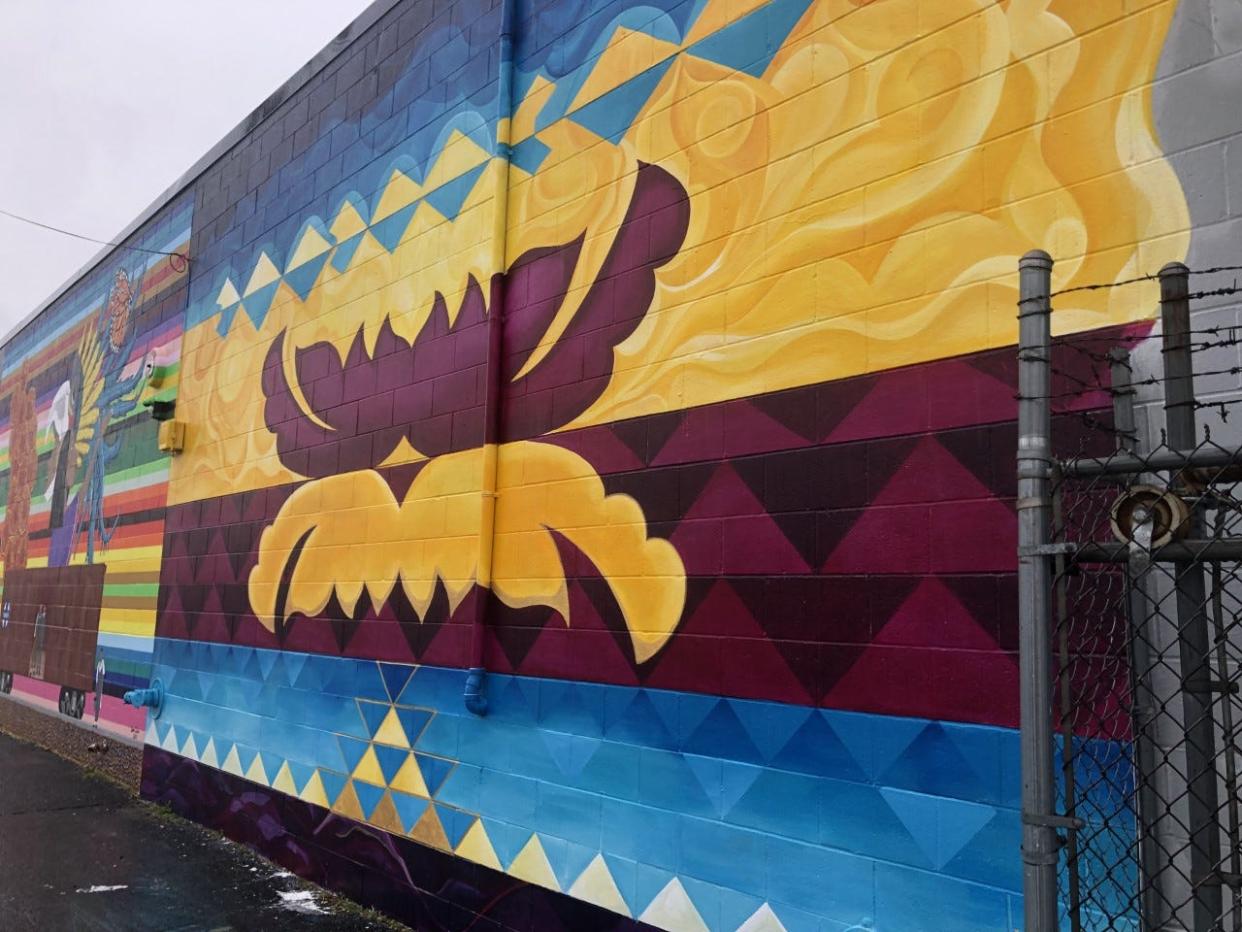Kansas law enforcement begin training on missing and murdered Indigenous people: 'We're a target'

When Rep. Ponka-we Victors travels between her home in Wichita and the Statehouse in Topeka, she constantly stays in touch with family or friends.
Native American women face higher rates of murder, rape and violent crime than national averages. Victors has relatives who are still missing and friends who were murdered.
"My mom had always taught me to always check in," Victors said. "I'm a married 41-year-old woman, but I still check in with my mom. I still let somebody know, my husband know, my whereabouts or where I'm at."
As a mother herself, she will have the same conversation with her own child.
"I have a daughter and I'm going to teach her the same way to be careful. We're a target. Don't become part of the statistics," she said. "This is what it's like. This is how it is."
Thanks to legislation Victors championed in the Legislature, law enforcement officers in Kansas now have new training on missing and murdered Indigenous people.
More: How can Kansas schools improve Native American education? Start by teaching it.
Training helps police understand missing, murdered Indigenous people
Republican Attorney General Derek Schmidt announced Monday that the new online training module is available from the Kansas Law Enforcement Training Center. It launched July 1.
The approximately 90-minute course includes self-paced online reading and videos with a multiple choice exam.
The new training contains "historical context, definitions, statutes, tribal sovereignty and jurisdictional challenges, the potential nexus with human trafficking, the importance of federal, state and local partnerships, and resources available to aid investigations," the attorney general's office said.
Schmidt's office developed the training in consultation with KLETC, the Kansas Bureau of Investigation, the four federally recognized tribes in Kansas and Native American legislators.
The training legislation, HB 2008, had been sponsored by Victors, D-Wichita, and Rep. Christina Haswood, D-Lawrence. Both legislators are Native American women.
Victors started the effort in 2020, shepherding the bill through the full House and a Senate committee. But it stalled at the onset of the COVID-19 pandemic. She reintroduced the legislation in 2021, eventually passing both chambers with bipartisan, unanimous support.
Victors said the support of Schmidt and the KBI were instrumental in enacting a life-saving law.
"I'm glad to see that there's training," she said. "I feel like it's been a long time coming, and finally I feel like somebody out there cares that every day our women and girls go missing. And now hopefully with this training, it can alert law enforcement, because so many hiccups can happen that could prevent an Indigenous girl or woman from being found."
Victors said the legislation is a first step to address "a major crisis that is happening in Indian country."
"There's many steps to this problem," she said. "This isn't like a one-law-fix-all."
There may be tweaks to training, upgrades to data collection and tracking, as well as improving communication with law enforcement. The attorney general's office said KLETC will update the training based on feedback.
RELATED: Native American boarding schools supported US land grab and forced cultural assimilation
Addressing an 'epidemic' of missing Indigenous women and girls
A USA TODAY Network investigation this spring found that Indigenous women and girls go missing and are murdered at disproportionately high rates compared with other ethnic groups.
The FBI's report of 5,203 missing Indigenous girls and women in 2021 represented a rate more than 2.5 times their share of the population, which was believed to be an undercount because comprehensive federal data is lacking.
Last spring, the U.S. Department of the Interior formed a new Bureau of Indian Affairs unit on missing and murdered people. Interior Secretary Deb Haaland said the unit will provide resources and leadership, as "violence against Indigenous peoples is a crisis that has been underfunded for decades."
Last fall, President Joe Biden signed an executive order directing federal agencies to address the "epidemic."
The National Missing and Unidentified Persons System, or NamUs, currently lists three missing American Indian or Alaskan Natives from Kansas. They are Michael Aycock, age 42, of Walton, missing since May 30, 2017; Jay Shumate, age 60, of Erie, missing since Jan. 1, 2016; and Bernard Mulanax, age 43, of Manhattan, missing since Dec. 26, 2009.
More: 'My daughter is missing': New laws fail to shield Indigenous women from higher murder rate
Nationwide, there are 774 such people.
"I hate to say the next time, but if a case like this ever occurs, our law enforcement will be better prepared and better trained on how to handle these situations," Victors said.
Native American families often take matters into their own hands, Victors said, organizing over Facebook with hashtag acronyms MMIW and MMIP to alert the community to missing Indigenous women and people.
"Families have done their own search parties when somebody comes up missing, because law enforcement hadn't had the proper training, so they don't really know how to work with the Native American families and tribes," Victors said. "So there was always that miscommunication there and that mistrust there. ... We don't have time to sit there and explain about MMIP or MMIW. Our sister's missing, we got to get out there now, we don't have time to go through it.
"With this training, it will kind of help open up those doors so that they can act on it faster and be like: 'Oh, I heard about this subject. Yeah, this is a problem. This is an issue, and yeah, we know how to handle this kind of thing.'"
Jason Tidd is a statehouse reporter for the Topeka Capital-Journal. He can be reached by email at jtidd@gannett.com. Follow him on Twitter @Jason_Tidd.
This article originally appeared on Topeka Capital-Journal: Native American lawmaker says Kansas police training will save lives

